Learn how to defrost prawns safely with four simple methods that are used by chefs and experts. These methods can be used to defrost shrimp, and other seafood as well.
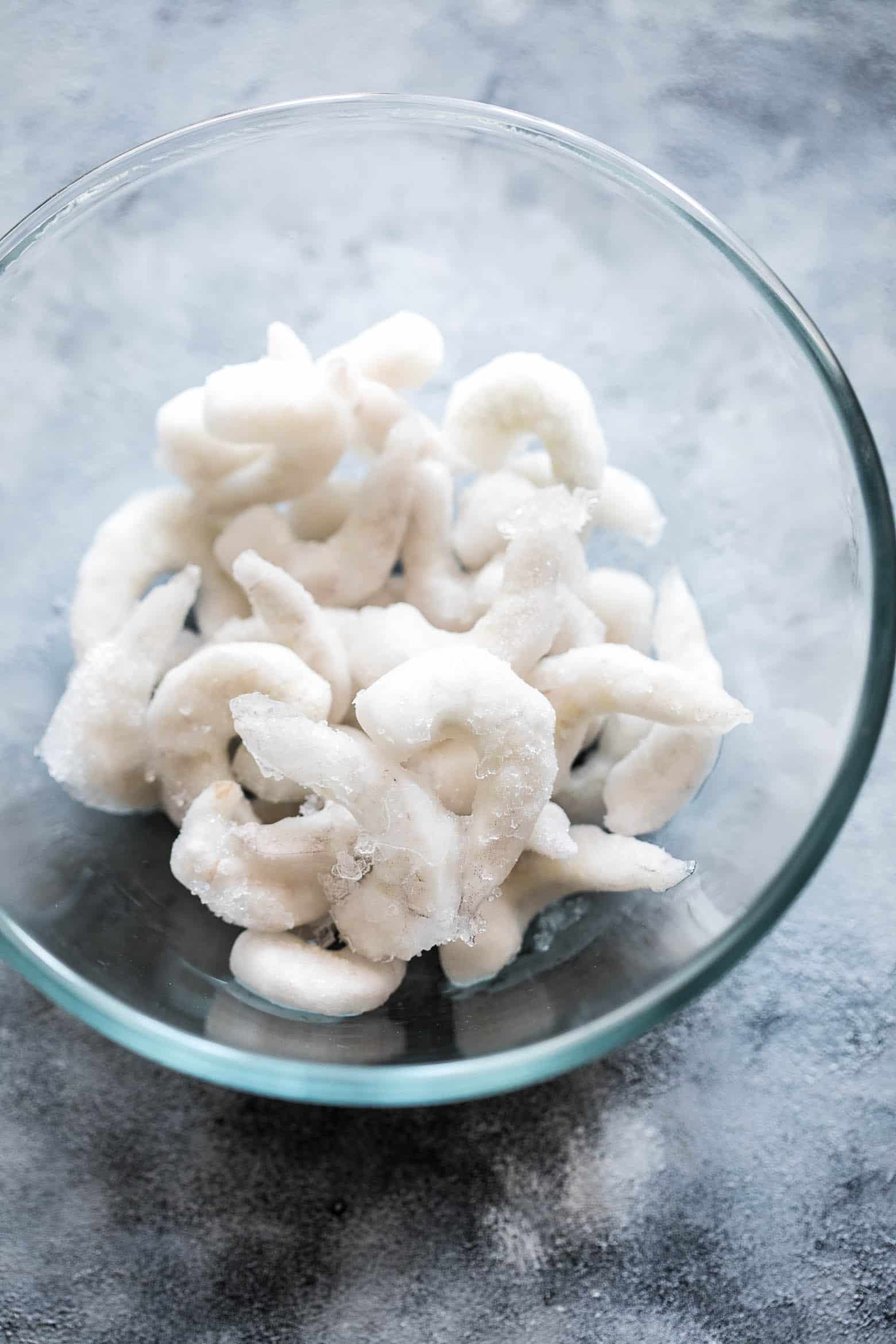
With so many questions about how to defrost prawns safely, I decided it’s time to put a ‘defrosting prawn 101’ so that you have all the information you need packed into one solid article. Because these are the same questions I had when I started buying frozen prawns vs fresh prawns recently. Read why here.
Quick Walk Through: How to Defrost Prawns Safely
Fresh vs Frozen Prawns
The decision to buy frozen prawns vs. fresh prawns is simple actually. Most fresh prawns or shrimp that you see in the market have already been frozen for anywhere between a couple of days to months. (Unless you have access to the sea and know a really good seafood vendor you can trust). The vendors thaw them as and when they are sold, which means there is no guarantees of whether they are still safe for consumption.
Which is why we prefer frozen prawns as they are safe, hygienic and individually frozen. ITC Master Chef is my favorite brand, and one I highly recommend. That's because their prawns are freshly frozen within 15 hours of harvesting. ITC also follows the Individually Quick Frozen (IQF) method, thereby compling with the highest hygiene and safety standards.
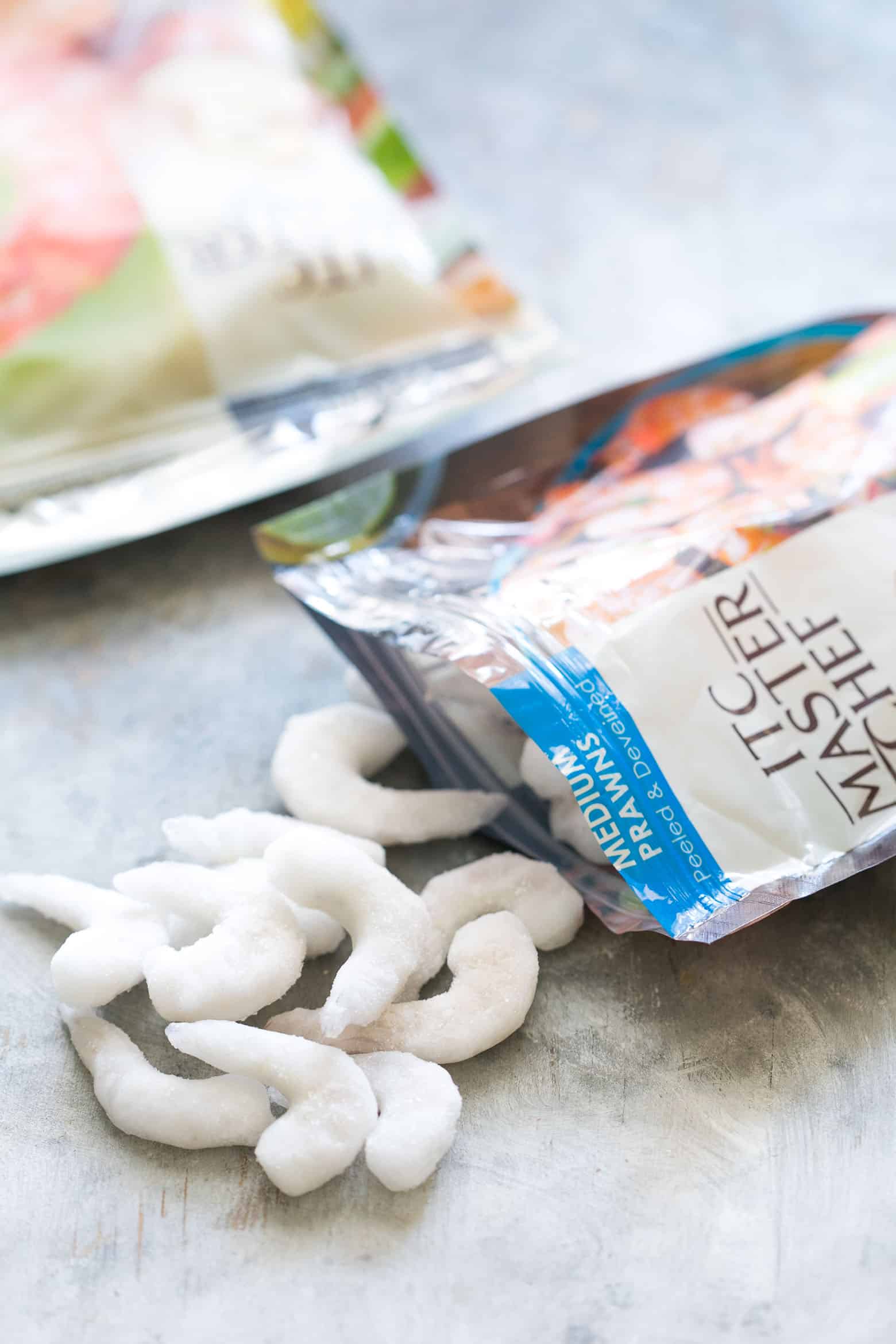
How to Defrost Prawn Safely
When you google how to defrost prawns or shrimp safely, there are a ton of answers that’ll come up. There are some that may seem easier than the others but that doesn’t necessarily mean that they are the safest or the best.
So here are four methods that will show you how to defrost prawns and shrimp safely:
How to defrost prawns safely in Cold Water Brine (Method #1)
- Add 2 tablespoons salt to 4 cups cold water (enough to completely submerge the prawns)
- Take the frozen prawns out of the pack and soak them in the cold brine for 15-20 minutes till they thaw completely
- Drain the liquid and use the prawns
I personally like this method because the cold water helps defrost the prawns quickly and consistently, while the salt in the water adds more juiciness and flavor to the prawns. Also, this is a one-time thing where you can just leave the frozen prawns to sit in the cold-water brine while you prep everything else to make dinner. Just make sure to adjust the salt in your dish so that it doesn't become too salty.
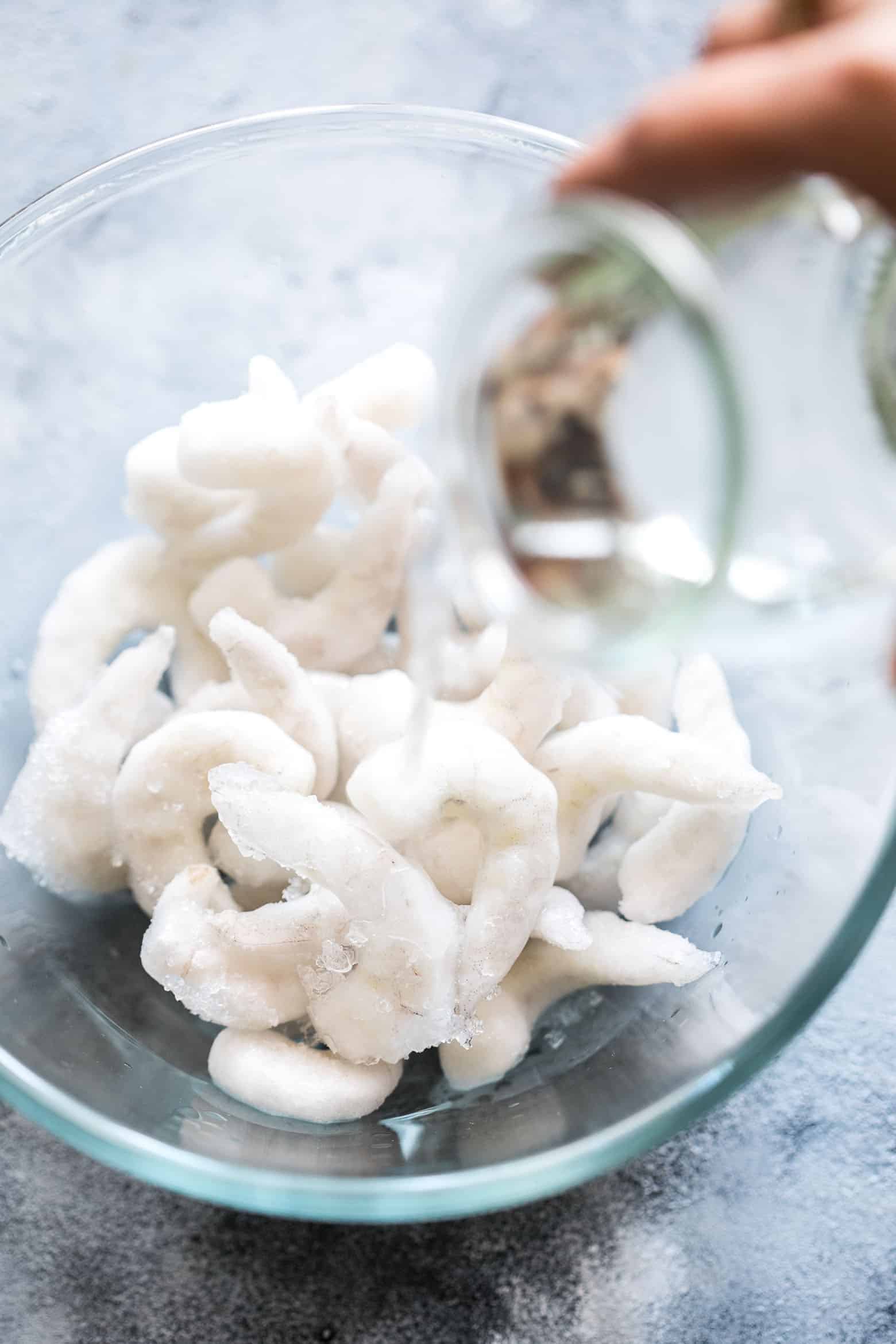
How to defrost prawns safely in a Polybag (Method #2)
- Make a few holes in a polybag and transfer the frozen prawns to it
- Place the bag in a bowl of water for 15-20 minutes till they defrost completely
ITC Master Chef, a brand of frozen prawns that we regularly use, recommends this method. It essentially works the same way as Method #1. The holes in the polybag allow water to get in touch with the prawns without having to completely submerge them in water.
How to defrost prawns safely in Running Water (Method #3)
- Take the frozen prawns out of the pack and place them in a colander or large sieve
- Place the colander under running water for a few minutes while moving the prawns around in a way the water runs over them evenly until completely defrosted.
While this method works really well too, it leads to a lot of water wastage. Additionally, the tap water has to be cold (not warm), something that's not possible during Indian summers. Hot water or warm water can partially cook the prawns while thawing, which can make the dish unpalatable.
How to defrost prawns safely in the Refrigerator (Method #4)
- Transfer frozen prawns to an airtight container
- Place the container in the refrigerator overnight or for 8 hours to thaw them
- Rinse with cold water before using them
Restaurants and hotels often use this method to thaw prawns, shrimp or other shellfish. The reason I don’t do this very often is because I can never plan ahead like this. This method doesn't work for me because I usually start thinking about dinner when it’s already too late :P. But it's perfect for when you need to cook prawns for a party or guests. This way the prawns will be ready whenever you are. Just note that 8 hours is optimum time to leave prawns or shrimp to thaw in the refrigerator.
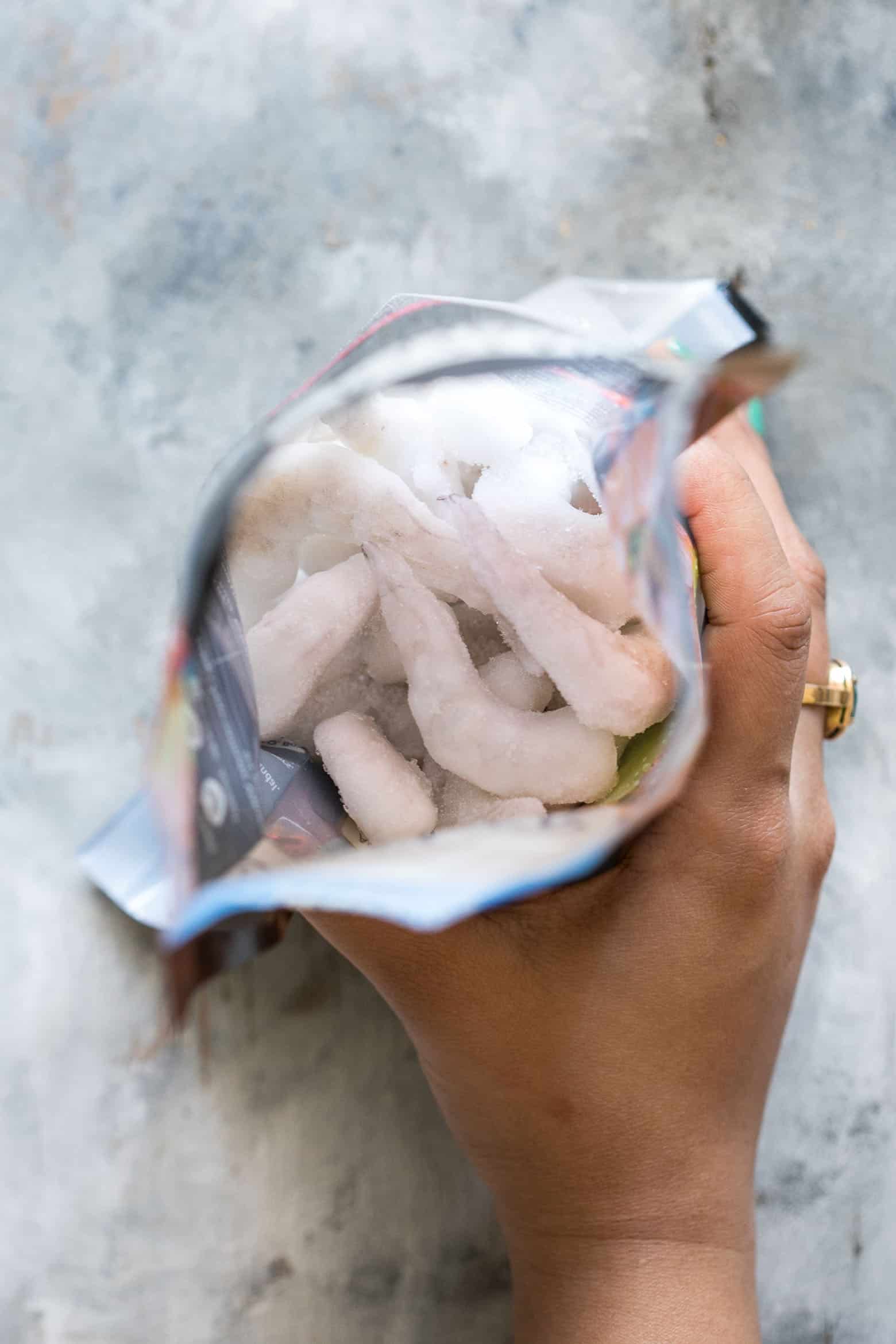
Frequently Asked Questions
Now you may have noticed that there is one commonality between all of these methods and that’s all the methods use cold water or a cold environment while thawing prawns. Which may sound weird to you, because why wouldn’t you just dunk them in warm water so that the ice melts away faster?
Well the reason is that prawns are highly perishable, and cook really fast. What that means is that the cold environment thaws them while still keeping them safe enough when you are ready to cook with them. Also, warm water can cook the outsides of the prawns without thawing them from the inside, so that when you can actually place them on heat, you will end up with chewy, rubbery, overcooked prawns.
NO, because a microwave essentially warms up the interior while defrosting anything, which can work if you have an already cooked dish, but for raw prawns or shellfish, it’s important that the defrosting process does not cook it. The meat can become semi cooked with the outer layer cooked and the inner layer still frozen. This will lead to an unevenly cooked dish.
Frozen prawns should not be cooked without thawing, because this leads to them becoming overcooked. This is again important to make sure your prawns are soft, juicy and well cooked.
Frozen prawns should not be cooked without thawing, because this leads to them becoming overcooked. This is again important to make sure your prawns are soft, juicy and well cooked.
No, it isn’t safe to refreeze prawns which are already thawed. When you refreeze thawed prawns, the process breaks down cells, takes away the moisture and changes the integrity of the protein. Another reason is that thawed food develops bacteria faster than fresh.
Brands like ITC Master Che use Individually Quick Frozen method in easy reseal bags within a few hours of sourcing. Which means you can take out the quantity you need and place the remaining back in the freezer. This ensures that you don’t have thaw everything in one go.
I hope this article on how to defrost prawns safely was helpful, and answered any questions you may have had. Even though this article is only about defrosting prawns, you can use it for any other shellfish! If you have a favorite method that we haven't covered, I’d love to hear back from you.
This is part 2 in a series of articles that we’ll be bringing to you about Prawns. Leave us a comment below and tell us what you think about our second part of Prawn 101. You can read Part 1 which talks about fresh vs. frozen prawns here. Thanks to our friends at ITC Master Chef for making this series possible.

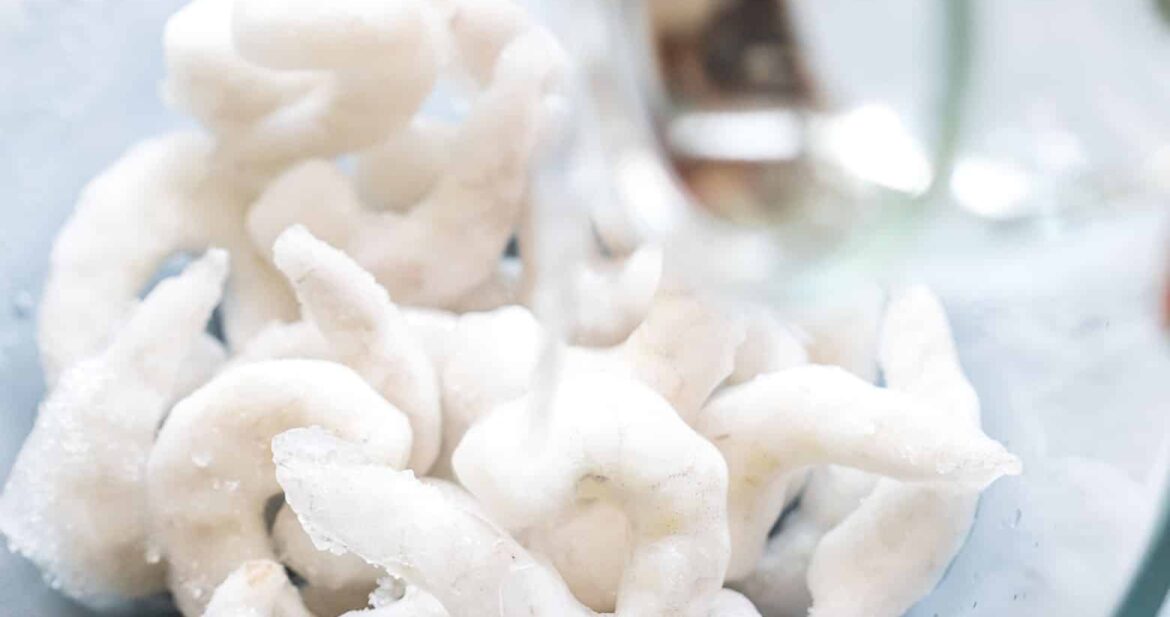
Carol Kempton says
When I’ve had peeled prawns put under running water it’s always washed the natural sea salt flavour away, and left them tasteless.
Jean says
Thank you for the advice re. defrosting frozen prawns
Dean Gardiner says
thanks for taking the time to share your knowledge of food with newbies.
Keep up the good work.
Louise says
Thanks for this very helpful article!
Jivitesh Kumar says
Where do you buy these frozen prawns ? I did not find ITC brand in the online stores
Richa says
Hey Jivitesh, ITC Master Chef prawns are available on Big Basket and other leading stores in Delhi NCR and Hyderabad, and they'll be available in Bangalore and Kolkata by October 🙂